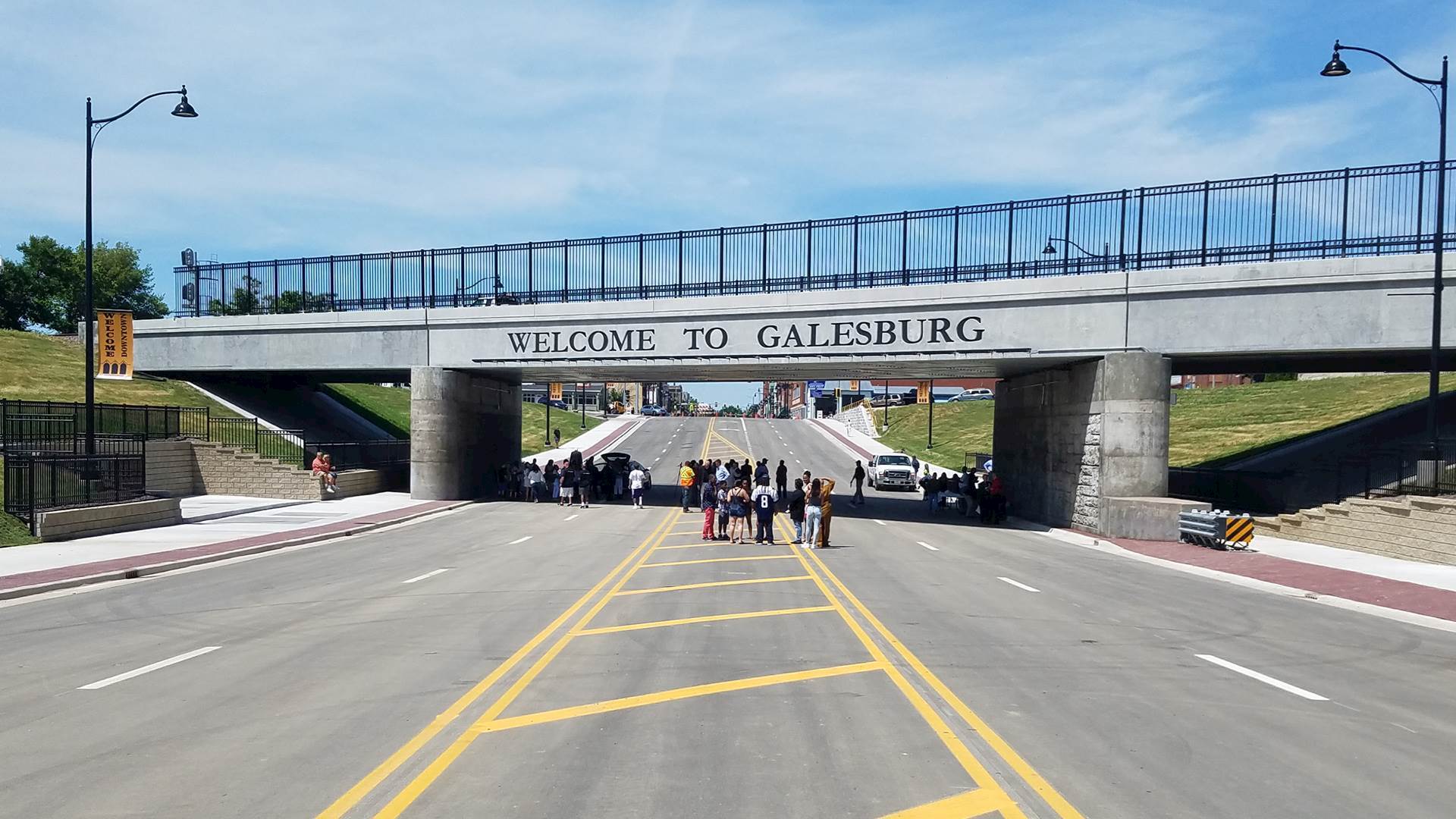
The Rev. Jon A. Sibley A. Sr. Underpass opened in 2018, the final of three grade separations that significantly improved traffic flow and the overall quality of living in Galesburg, Illinois.
Five years ago this month, the city of Galesburg, Illinois, opened to motorists the final of three grade separations that significantly upgraded the movement of traffic and overall quality of living in the northwest Illinois community.
Bridging the gap
In 2000, the city began laying the groundwork for a plan to address the problems saddling residents because of the busy Chillicothe and Mendota rail subdivisions. After studying multiple options, including relocating tracks outside the city, Galesburg determined that the most cost-effective solution would be grade separations at three crossings — the Donald L. Moffitt Overpass on West Main Street, completed in 2012; the Bickerdyke Bridge at North Seminary Street and Kellogg Street, which opened in 2014; and the Rev. Jon A. Sibley Sr. Underpass, unveiled in 2018. The American Public Works Association Illinois Chapter recognized the Sibley underpass with its 2019 Public Works Project of the Year Award in the transportation category for $5 million–$25 million projects, and the American Council of Engineering Companies of Illinois honored all three grade separations with its 2019 Special Achievement Award.
Main Street and Seminary are main arterial routes in Galesburg, and 100 trains per day used the West Main and Seminary crossings, traveling at 30 mph; vehicles averaged 4–5 minutes of wait time per train. The West Main tracks divided the residential northeast side of the city from the downtown business district and two of the local hospitals from the ambulance service.
“The development of the railroad bridges in our community has proven to be a tremendous asset to the Galesburg Fire Department and the citizens of Galesburg from a public safety aspect,” said Galesburg Fire Chief and Knox County Emergency Management Agency Coordinator Randy Hovind. “They have allowed us to expedite emergency services where once we may have been delayed due to railroad crossings that were in use.”
Giving the community a voice
Public involvement was a high priority during the project’s planning stages. Hanson and the city employed the context-sensitive solutions (CSS) approach to involve all stakeholders, including residents, in the decision-making process. The project team sought public opinion during all stages of the project, seeking input regarding aesthetics, landscaping and land acquisition.
“It was great to have the community’s input and support,” Wayne Carl, former Galesburg city engineer and public works director, said of CSS. “There wasn’t much opposition to this project, because the community looked at all the options, main design elements, aesthetics.”
Challenges and solutions
Historic preservation and land acquisition were major aspects of these projects. Galesburg is home to the National Railroad Hall of Fame, and the project team was able to improve access to the facility by curving the alignment of the roadway near the Seminary overpass. The design of the curved alignment also allowed the team to remove homes situated in such a way that their residents couldn’t exit their driveways without backing over tracks. Additionally, the team acquired land for a grain business near the West Main overpass that enabled the construction of a road, improving truck access to two trackside silos.
The completion of the East Main underpass helped the city realize its goal of freeing residents and emergency responders from the frequent traffic congestion and train horn noise that, for decades, had a stranglehold on Galesburg. Emergency vehicles’ response times have improved by as much as four minutes throughout the city since the grade separations opened. The projects also have improved local police patrols’ ability to monitor the community.
According to the city’s police chief, Russell Idle, “The railroad grade separations have greatly benefited the Galesburg Police Department in our ability to help our citizens. In the world of public safety, sometimes seconds count, and this project has given us access to those precious seconds to save lives.”
With the three bridges, Galesburg residents have seen their city take on a new life of vastly improved traffic circulation and access, including an enhanced economic climate in the downtown area. Train horn noise has decreased with the addition of quiet zones, allowing students and workers to focus more easily on their tasks and making open windows a reality.
The results of this project, however, extend beyond owner and public satisfaction. “From my perspective,” Carl said, “in addition to what they have provided above, the grade separations have aided in accessibility to the downtown area, which has led to improved business and has improved economic development. It has also provided a welcoming entrance to the heart of the city. This project has breathed life into our downtown.”